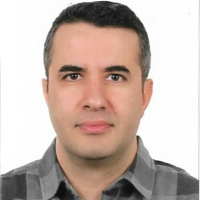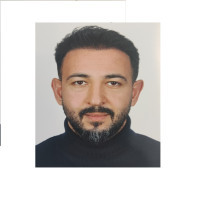Araştırma Makalesi
Amaç ve Kapsam
Sivas Cumhuriyet Üniversitesi Eğitim Bilimleri Enstitüsü Dergisi, Eğitim Bilimleri temel alanlarında hazırlanmış nitelikli araştırma ve incelemeleri yayımlayarak, eğitim bilimleri alanında bilimsel bilgi birikimine katkıda bulunmayı amaçlayan süreli bir yayındır. Bilimsel üretimin ve katılımın akademik birimlere yayılması, bilim dallarının yayın özelliklerinin objektif olarak yansıtılmasını sağlamak amaçlanır.
Sivas Cumhuriyet Üniversitesi Eğitim Bilimleri Enstitüsü Dergisi (CEBED), Eğitim Bilimleri Enstitüsü bünyesinde yayımlanır. Hazırlanacak çalışmalarda bilimsel araştırma ve yayın etiği ilkeleri ön planda tutulur. Okul öncesi, ilköğretim, ortaöğretim, yükseköğretim ve yetişkin eğitimi alanlarını doğrudan ilgilendiren deneysel, inceleme ve derleme yazılarını kapsamaktadır. Fen eğitimi, Okul Öncesi Eğitimi, Eğitim Bilimleri, İlköğretim Matematik, Ortaöğretim Matematik, Sınıf Öğretmenliği ve bu alanlarla disiplinler arası çalışmalara yer veren ulusal hakemli bir dergidir.
Yazım Kuralları
1. Sivas Cumhuriyet Üniversitesi Eğitim Bilimleri Enstitüsü Dergisine (CEBED) değerlendirilmek üzere gönderilecek çalışmaların aşağıda belirlenen yazım kurallarına uygun olarak hazırlanması gerekmektedir.
2. Yayın dili Türkçe ve İngilizcedir.
3. Bir çalışmanın uzunluğu ana metin, kaynakça ve ekler dahil 8.000 sözcüğü aşmayacak biçimde hazırlanmalıdır.
4. Dergiye gönderilecek çalışmalarda kısa özet Türkçe ve İngilizce 200-250 sözcük olmalı ve ayrıca en az 5 adet anahtar sözcük yer almalıdır. Ayrıca Türkçe ve ya İngilizce gönderilecek çalışmaların tümünde 750-1000 sözcük arası İngilizce/ Türkçe uzun özete de yer verilmelidir. Uzun özet içermeyen makaleler değerlendirme sürecine alınmayacaktır. Özgün araştırma makalelerinde uzun İngilizce/ Türkçe özet; amaç, yöntem, bulgular, tartışma ve sonuç alt başlıklarını içermelidir.
5. Yazılar aşağıda belirtilen dergi kurallarına uygun olarak herhangi bir biçimlendirme yapılmamış Word dosyası şeklinde hazırlanmalıdır.
6. Gönderilen tablo ve şekillerin derginin sayfa boyutları dışına taşmaması ve APA-7 stiline uygun olmasına dikkat edilmelidir. Bir tablo veya şekil bir sonraki sayfaya taşmamalıdır. Eğer sayfa sonuna geliyor ve bir kısmı taşıyorsa takip eden sayfaya yerleştirilmelidir. Ayrıca tablo ve şekillerde 10 punto ve tek aralık kullanılmalıdır.
7. Yazılar, Word formatında, A4 boyutunda 12 punto, Times New Roman yazı tipinde, her sayfanın dört kenarında 2,5 cm boşluk bırakılarak hazırlanmalıdır. Lütfen makalenizin metninin çift aralıklı olduğundan ve ardışık satır numaralandırmasına sahip olduğundan emin olunuz. Her sayfa numaralandırılmalıdır.
8. Ampirik çalışmalara ait ana metin giriş, yöntem, bulgular, tartışma ve sonuç bölümlerini içerebilir. Yöntem kısmında desen, evren ve örneklem, çalışma grubu ya da katılımcılar, veri toplama araçları ve verilerin analizi vb. alt bölümleri bulunmalıdır.
9. Derleme türü çalışmalarda konu özgün ve güncel olması ve problem açık bir şekilde ortaya konulmalı, ilgili alan yazın etkili bir biçimde analiz edilmeli ve tartışılmalıdır. Daha önce üzerinde çalışılmış, alana yenilik getirmeyen ve kritik bir bakış açısı içermeyen derleme çalışmaları kabul edilmeyecektir.
10. Kaynakça, metin içi atıflar, başlıklar, tablolar, şekiller için APA (7. Baskı) stili kullanılmalıdır.
11. Sisteme yüklenen dosyanın içerisinde yazar(lar)a ait bilgiler bulunmamalıdır. Microsoft Word belgelerinde Dosya menüsünden Genel > Seçenekler sekmesinden kullanıcı adı kaldırılmalı ve yazarı belirlemeyi mümkün kılacak bilgiler yer almamalıdır.
12. Araştırmanın etik kurul izni ile ilgili bilgiler kurum ismi belirtilmeden etik onay alındığına dair bilgiler ilgili başlık altına makale kabulü sonrası eklenmelidir. Ayrıca aday makalelere yönelik sorumlu yazardan, Etik Taahhütname sunması beklenmektedir. Etik onayı gerektirmeyen/bulunmayan aday çalışmalardan da, "Etik Kurul Belgesi" yerine sisteme "Etik Taahhütnamesi" yüklenmesi beklenmektedir. Etik Taahhütnamesi için tıklayınız.
15. Makale yükleme sürecinde tüm yazarlar tarafından Telif Hakkı Devir Formu doldurulması beklenmektedir. Telif Hakkı Devir Formu için tıklayınız.
16. Tüm aday makaleler gönderilmeden önce iThenticate© ve Turnitin© gibi yazılımlarla taranmalı ve bu tarama raporları makale ile birlikte sunulmalıdır. Tüm makalenin benzerlik oranı %20'den aşağıda olmalıdır. Sivas Cumhuriyet Üniversitesi Eğitim Bilimleri Enstitüsü Dergisi (CEBED) akademik aşırmacılık taşıyan tüm aday makaleleri editörlük aşamasında reddetme hakkına sahiptir.
Etik İlkeler ve Yayın Politikası
Dergide “Yayın Etiği”, “Araştırma Etiği” ve “Yasal/Özel izin belgesi alınması” ile ilgili kurallara uyduğunu uluslararası standartlara atıf yaparak, hem web sayfasında hem de basılı dergide her biri için ayrı başlık açarak belirtilmiştir.
Dergide yayın etiğine uygunluk konusu sadece yazarların sorumluluğuna bırakılmamış, tam metinde dergi yayın etiği konusunda izleneceği yolu açık olarak tanımlanmıştır.
Dergide yayımlanacak makalelerde etik kurul izini ve/veya yasal/özel izin alınmasının gerekip gerekmediği makalede belirtilmiş olmalıdır. Eğer bu izinlerin alınması gerekli ise, izinin hangi kurumdan, hangi tarihte ve hangi karar veya sayı numarası ile alındığı açıkça sunulmalıdır.
Çalışma insan ve hayvan deneklerinin kullanımını gerektiriyor ise çalışmanın uluslararası deklarasyon, kılavuz vb. uygun gerçekleştirildiği beyan edilmelidir.
Dergimizde yayımlanmakta olan çalışmalar ön inceleme, kör hakemlik süreci ve editöryal süreç olmak üzere üç önemli aşamadan geçmektedir. Hakemlik sürecinde her makale en az iki hakem tarafından incelenmektedir.
Ücret Politikası
Dergimizde yayımlanan makalelerden herhangi bir ücret talep edilmemektedir.
Dizinler
Dergi Kurulları
Editör

Editör Yardımcısı



Alan Editörleri (Matematik ve Fen Bilimleri Eğitimi)



Sivas Cumhuriyet Üniversitesi Eğitim Fakültesi Eğitimde Ölçme ve Değerlendirme ABD başkanı





Alan Editörleri (Temel Eğitim)


Alan Editörleri (Türkçe ve Sosyal Bilgiler Eğitimi)



Alan Editörleri (Özel Eğitim)

Alan Editörleri (Eğitim Bilimleri)

Doç. Dr. Mustafa Ersoy, Sivas Cumhuriyet Üniversitesi Eğitim Fakültesi, Eğitim Bilimleri Bölümü, Eğitim Programları ve Öğretim Anabilim Dalı öğretim üyesidir. Kariyerine 2004-2005 yıllarında bilgisayar öğretmeni olarak başlamıştır, 2021 yılından beri doçent olarak görev yapmaktadır. Araştırma alanları sosyal bilimler kapsamında olup özellikle öğretim teknolojileri ile eğitim programları ve öğretim alanlarında çalışmaları bulunmaktadır.
Alan Editörleri (Yabancı Diller Eğitimi)

Güzel Sanatlar Eğitimi




Ali Ertuğrul Küpeli, 1988 yılında Konya'da doğmuş olup, 2006 yılında Konya Çimento Güzel Sanatlar Lisesi'nden mezun olmuştur. Lisans eğitimini 2010 yılında Selçuk Üniversitesi Eğitim Fakültesi Güzel Sanatlar Resim-İş Öğretmenliği Bölümü'nde tamamlayan Küpeli, 2012 yılında Gazi Üniversitesi Eğitim Fakültesi Güzel Sanatlar Eğitimi Resim-İş Eğitimi Anabilim Dalı'nda Araştırma Görevlisi olarak göreve başlamıştır. Yüksek lisansını "Çok Alanlı Sanat Eğitimi Yönteminin Temel Tasarım Dersi Kapsamında Öğrencilerin Üç Boyutlu Tasarım Çalışmalarında Uygulanması" başlıklı tezi ile 2014 yılında, doktorasını ise "Resim-İş Eğitimi Anabilim Dalı Öğrencilerinin Güncel Sanat Yaratım Süreçlerinde Beden Kullanımının Rolü" konulu tezi ile 2018 yılında tamamlamıştır. 2021 yılında Doçent Doktor unvanını kazanan Küpeli, halen Gazi Üniversitesi Güzel Sanatlar Enstitüsü Resim Anasanat Dalı'nda Sanatta Yeterlik eğitimine devam etmekte ve Gazi Üniversitesi Eğitim Fakültesi Güzel Sanatlar Eğitimi Resim-İş Eğitimi Anabilim Dalı'nda öğretim üyesi olarak görev yapmaktadır. Sanat ve eğitim alanlarında ulusal ve uluslararası düzeyde önemli katkılarda bulunmuş olan Küpeli, çeşitli sanatsal organizasyonlarda katılımcı ve idari görevlerde yer almış, sanat çalışmalarını birçok sergide izleyiciye sunmuştur. Araştırma alanları sanat, resim, güzel sanatlar ve plastik sanatlar üzerine odaklanan Küpeli, akademik çalışmalarıyla dikkat çekmektedir. ORCID numarası 0000-0003-3485-8489 olan Küpeli, Türkiye genelinde sanat yarışmalarında jüri üyelikleri yapmış, eğitim projeleri geliştirmiş ve çok sayıda makale ile kitap bölümü yayınlamıştır. İletişim için kendisine alikupeli@gazi.edu.tr veya aliertugrulkupeli@gmail.com adreslerinden ulaşılabilir.
İstatistik Editörü

Sivas Cumhuriyet Üniversitesi Eğitim Fakültesi Eğitimde Ölçme ve Değerlendirme ABD başkanı
Yazım Editörleri
Sekreterya

Mizanpaj








